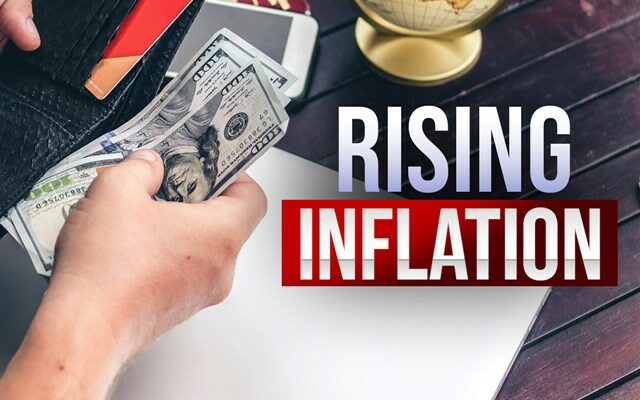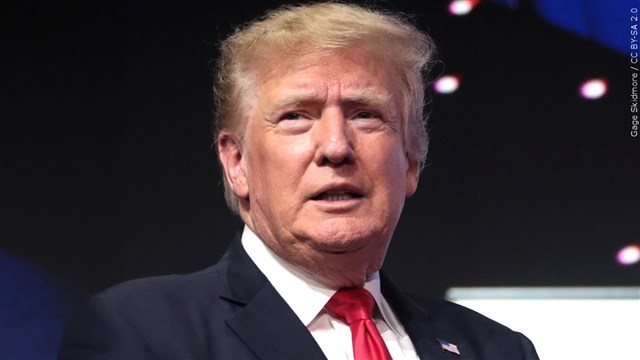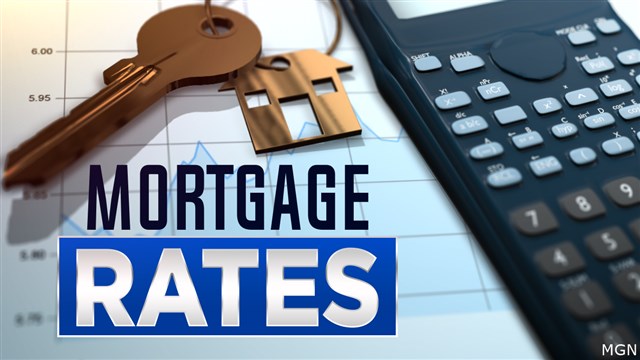US Inflation Reached A New 40-Year High In June Of 9.1%

WASHINGTON (AP) — Surging prices for gas, food and rent catapulted U.S. inflation to a new four-decade peak in June, further pressuring households and likely sealing the case for another large interest rate hike by the Federal Reserve, with higher borrowing costs to follow.
Consumer prices soared 9.1% compared with a year earlier, the government said Wednesday, the biggest yearly increase since 1981, and up from an 8.6% jump in May. From May to June, prices rose 1.3%, another huge increase, after prices had surged 1% from April to May.
The persistent price acceleration has underscored the brutal impact inflation has inflicted on Americans, with the costs of necessities, in particular, rising much faster than average incomes. Lower-income and Black and Hispanic Americans have been hit especially hard, because a disproportionate share of their income goes toward such essentials as housing, transportation and food.
The inflation spike has diminished consumers’ confidence in the economy, sent President Joe Biden’s approval ratings tumbling, posed a political threat to Democrats in the November elections and raised the risk of a recession caused by much higher interest rates. Forty percent of adults said in a June AP-NORC poll that they thought tackling inflation should be a top government priority this year, up from just 14% who said so in December.
The U.S. inflation surge erupted from the swift rebound from the 2020 pandemic recession, spurred by vast federal aid, ultra-low Fed rates and pent-up spending fueled by savings built up during the nation’s shutdowns. As Americans channeled their purchases toward items for the home, like furniture, appliances and exercise equipment, supply chains became snarled and prices for goods soared. Russia’s war against Ukraine further magnified energy and food prices.
In recent months, as consumer spending has gradually shifted away from goods and toward services like vacation travel, restaurants meals, movies, concerts and sporting events, the resulting higher demand has fueled high inflation in services, too.
Some economists have held out hope that inflation might be reaching a short-term peak. Gas prices, for example, have fallen from the eye-watering $5 a gallon reached in mid-June to an average of $4.63 nationwide Wednesday — still far higher than a year ago but a drop that could help slow inflation for July and possibly August.
In addition, shipping costs and commodity prices have begun to fall. Pay increases have slowed. And surveys show that Americans’ expectations for inflation over the long run have eased — a trend that often points to more moderate price increases over time.
“There may be some relief in the July numbers — commodity prices have come off the boil, at least — but we are a very, very long way from inflation normalizing, and there is no tangible sign of downward momentum,” said Eric Winograd, an economist at asset manager AB.
The relentless pace of price increases has forced many Americans to turn to food banks or to make other changes in their lives. Among them is Marcia Freeman, 72, who lives near Atlanta and who visited a food bank this week, something she rarely did before prices began accelerating. She has stopped buying salmon and other seafood because it’s grown too expensive. Even the cheaper store brands, she said, are now much pricier.
Freeman lives on a fixed income — she receives a pension — that hasn’t kept up with inflation.
“Everything goes up,” she said, “except what we’re getting.”
Some people blame companies for using inflation as a cover to raise prices beyond the amount they need to cover their own higher costs.
“I feel the inflation pain every day,” Susana Hazard said this week outside a grocery store in New York City. “Every day, everything is going up and up, more than inflation — they’re price-adjusting. Because even if inflation doesn’t happen, they’ve raised the prices.”
There is evidence that Corporate America has become less competitive, making it easier for companies to jack up prices. But most economists say corporate price gouging is, at most, one of many causes of runaway inflation and not the primary one.
Still, the breadth of the price gains shows how rising costs have seeped into nearly every corner of the economy. Grocery prices have jumped 12.2% compared with a year ago, the steepest such climb since 1979. Rents have risen 5.8%, the most since 1986. New car prices have increased 11.4% from a year earlier. And average airline fares, one of the few items to post a price decline in June, are nevertheless up 34% from a year earlier.
Energy prices soared 7.5% just from May to June, accounting for nearly half the month-over-month inflation. Gas prices have skyrocketed nearly 60% compared with a year ago. From May to June, the cost of dental services surged 1.9%, the biggest one-month increase since record-keeping began in 1995.
Excluding the volatile food and energy categories, so-called core prices rose 0.7% from May to June, the biggest such spike in a year. Compared with 12 months earlier, core prices jumped 5.9%, below a recent peak of 6.4% but still exceedingly high.
Inflation is surging well beyond the United States, with 71 million people pushed into poverty in the three months after Russia invaded Ukraine, which further magnified energy and food prices, the U.N. Development Program said last week.
The war’s economic damage has been especially severe in Europe, with its reliance on Russian oil and natural gas squeezing businesses and consumers with sharply higher bills for utilities, groceries, gasoline and more. Inflation reached decades-high levels of 8.6% last month in the 19 countries that use the euro currency and 9.1% in the United Kingdom in May.
With many people priced out of the market for houses and looking instead to rent, demand for apartments has sent rental rates beyond affordable levels. The average cost of new leases has jumped 14% in the past year, according to real estate brokerage Redfin, to an average of $2,016 a month.
Rents as measured by the government’s inflation index have risen more slowly because they include all rents, including existing leases. But economists expect the rising expense of new leases to send the government’s inflation measure higher in coming months.
The persistence of high inflation has unnerved Chair Jerome Powell and other Fed officials, who are engaged in the fastest series of rate hikes since the late 1980s to try to slow the price spikes. The central bank is expected to raise its key short-term rate later this month by a hefty three-quarters of a point, as it did last month, with potentially more large rate hikes to follow.
Powell has stressed that the central bank wants to see “compelling evidence” that inflation is slowing before it would dial back its rate hikes. Such evidence would need to be a “series of declining monthly inflation readings,” Powell said at a news conference last month.
Many economists worry that the Fed’s drive to quell inflation will cause it to tighten credit too aggressively even while the economy, by some measures, is slowing. Much higher borrowing costs could trigger a recession, potentially by next year.
Consumers have started to pull back on spending, home sales are falling as mortgage rates rise and factory output slipped in May. Yet steadily robust job growth points to an economy that is still expanding, with little sign of an imminent recession.
You Might Also Like



